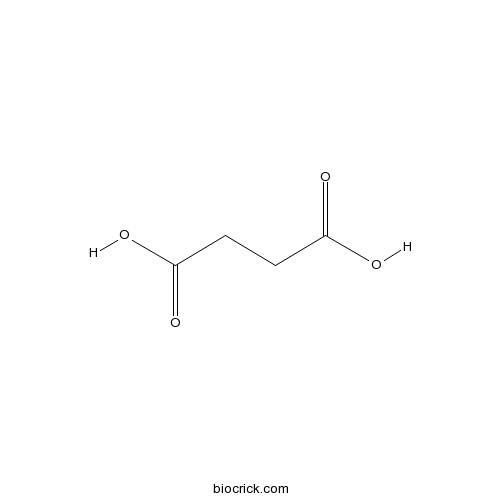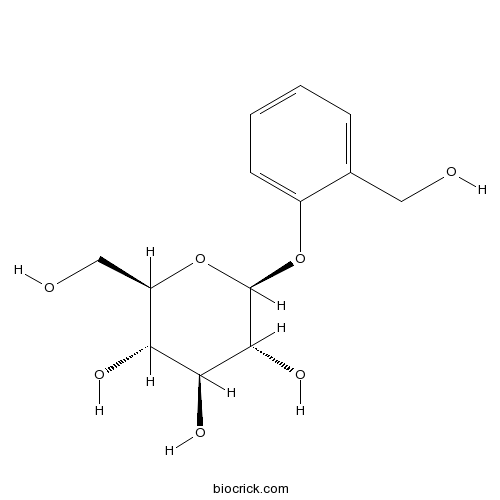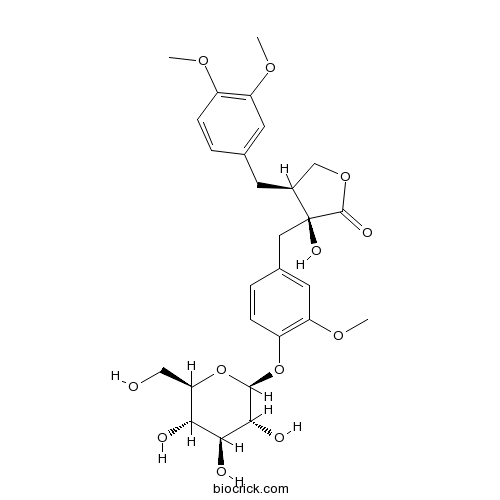Hemistepta lyrata
Hemistepta lyrata
1. The products in our compound library are selected from thousands of unique natural products; 2. It has the characteristics of diverse structure, diverse sources and wide coverage of activities; 3. Provide information on the activity of products from major journals, patents and research reports around the world, providing theoretical direction and research basis for further research and screening; 4. Free combination according to the type, source, target and disease of natural product; 5. The compound powder is placed in a covered tube and then discharged into a 10 x 10 cryostat; 6. Transport in ice pack or dry ice pack. Please store it at -20 °C as soon as possible after receiving the product, and use it as soon as possible after opening.
Natural products/compounds from Hemistepta lyrata
- Cat.No. Product Name CAS Number COA
-
BCN5890
Succinic acid110-15-6
Instructions

-
BCN6298
D-(-)-Salicin138-52-3
Instructions

-
BCN2738
Tracheloside33464-71-0
Instructions

-
BCN5549
Astragalin480-10-4
Instructions

[Effects of different fertilization regimes on weed communities in wheat fields under rice-wheat cropping system].[Pubmed: 27228601]
To reveal the effects of different fertilization regimes on weed communities in wheat fields under a rice-wheat rotation system, a survey was conducted before wheat harvest in 2014 after a 4-year long-term recurrent fertilization scheme. Weed species types, density, height and diversity index under different fertilization and straw-returning schemes in wheat fields were studied and complemented with a canonical correspondence analysis on weed community distribution and soil nutrient factors. Twenty weed species were recorded among 36 wheat fields belonging to 19 genera and 11 families. Beckmannia syzigachne, Hemistepta lyrata, Malachium aquaticum and Cnidium monnieri were widely distributed throughout the sampled area. Long-term fertilization appeared to reduce weed species richness and density, particularly for broadleaf weeds, but increased weed height. Diversity and evenness indices of weed communities were lower and dominance indices were higher in fields where chemical fertilizers were applied alone or combined with organic fertilizers, especially, where organic-inorganic compound fertilizer was used, in which it readily caused the outbreak of a dominant species and severe damage. Conversely, diversity and evenness indices of weed communities were higher and dominance indices were lower when the straw was returned to the field combined with chemical or organic fertilizers, in which weed community structures were complex and stable with lower weed density. Under these conditions weeds only caused slight reduction of wheat growth.
Simultaneous quantification and validation of caffeoylquinic acids and flavonoids in Hemistepta lyrata and peroxynitrite-scavenging activity.[Pubmed: 23333682]
Traditionally, Hemistepta lyrata is consumed as a mountainous vegetable or a medicinal herb to treat inflammation, fever, hemorrhage, and hemorrhoids. In order to provide the scientific evidence of traditional uses of this plant, we identified and quantified thirteen active substances (caffeic acid, chlorogenic acid, and 3,5-di-O-caffeoylquinic acid as caffeoylquinic acids; apigenin, isorhoifolin, acacetin, linarin, diosmetin, diosmin, pectolinarigenin, and pectolinarin as flavones or their glycosides; kaempferol 3-O-rutinoside and rutin as flavonol glycosides) from H. lyrata and evaluated their peroxynitrite-scavenging activity. The chromatographic separation was performed on a Capcell Pak C18 column (5μm, 250mm×4.6mm i.d.) with a gradient elution of 0.05% TFA (trifluoroacetic acid) and 0.05% TFA in MeOH-CH(3)CN (60:40). Validation of HPLC methods on the linearity, LOD, LOQ, intra-day and inter-day variabilities, recovery, and repeatability proved that this method is selective, sensitive, precise, accurate, and reproducible. In peroxynitrite-scavenging assay, caffeic acid derivatives (chlorogenic acid, caffeic acid, and 3,5-di-O-caffeoylquinic acid) exhibited relatively lower IC(50) values than other substances tested. And HPLC simultaneous quantification showed that the 70% MeOH extract and the BuOH fraction contain a higher quantity of caffeic acid derivatives (17.82 and 30.09mg/g, consecutively). Therefore, caffeic acid derivatives could be the main contributors to the peroxynitrite-scavenging activity of H. lyrata than other phenolic substances.
Comparative study of rhizobacterial community structure of plant species in oil-contaminated soil.[Pubmed: 20890100]
In this study, the identity and distribution of plants and the structure of their associated rhizobacterial communities were examined in an oil-contaminated site. The number of plant species that formed a community or were scattered was 24. The species living in soil highly contaminated with total petroleum hydrocarbon (TPH) (9,000-4,5000 mg/g-soil) were Cynodon dactylon, Persicaria lapathifolia, and Calystegia soldanella (a halophytic species). Among the 24 plant species, the following have been known to be effective for oil removal: C. dactylon, Digitaria sanguinalis, and Cyperus orthostachyus. Denaturing gradient gel electrophoresis (DGGE) profile analysis showed that the following pairs of plant species had highly similar (above 70%) rhizobacterial community structures: Artemisia princeps and Hemistepta lyrata; C. dactylon and P. lapathifolia; Carex kobomugi and Cardamine flexuosa; and Equisetum arvense and D. sanguinalis. The major groups of rhizobacteria were Betaproteobacteria, Gamma-proteobacteria, Chloroflexi, Actinobacteria, and unknown. Based on DGGE analysis, P. lapathifolia, found for the first time in this study growing in the presence of high TPH, may be a good species for phytoremediation of oil-contaminated soils and in particular, C. soldanella may be useful for soils with high TPH and salt concentrations. Overall, this study suggests that the plant roots, regardless of plant species, may have a similar influence on the bacterial community structure in oil-contaminated soil.
Acylated flavone C-glycosides from Hemistepta lyrata.[Pubmed: 20839125]
Two new acylated flavone C-glycosides, 6''-O-(2'''-methylbutyryl)isoswertisin (1) and 6''-O-(2'''-methylbutyryl)isoswertiajaponin (2), together with four known acylated flavone C-glycosides, were isolated for the first time from the whole plants of Hemistepta lyrata (Compositae). Their structures were elucidated on the basis of chemical and spectroscopic methods including HR-ESI-MS, ESI-MS, UV, IR, and 1D and 2D NMR spectral techniques.
[Studies on the chemical constituents in herbs of Hemistepta lyrata].[Pubmed: 17048662]
To investigate the chemical constituents of Hemistepta lyrata.
[Study on chemical constituents of Hemistepta lyrata Bunge].[Pubmed: 12579973]
To separate and identify the chemical constituents of the whole plant of Hemistepta lyrata Bunge.
[Studies on the chemistry of two new compounds of Hemistepta lyrata].[Pubmed: 12579801]
To study the chemical constituents of Hemistepta lyrata.
[Studies on chemical constituents from Chinese medicinal plant Hemistepta lyrata Bunge].[Pubmed: 12528508]
To separate and identify the chemical constituents of the whole plant.


